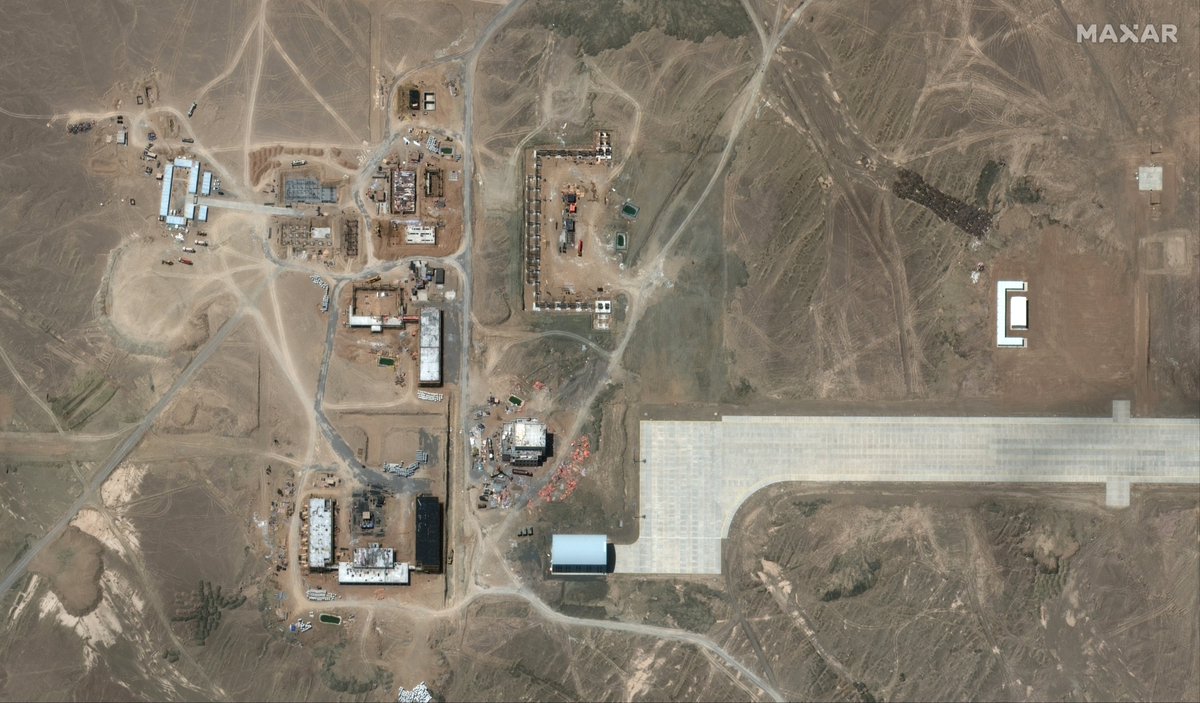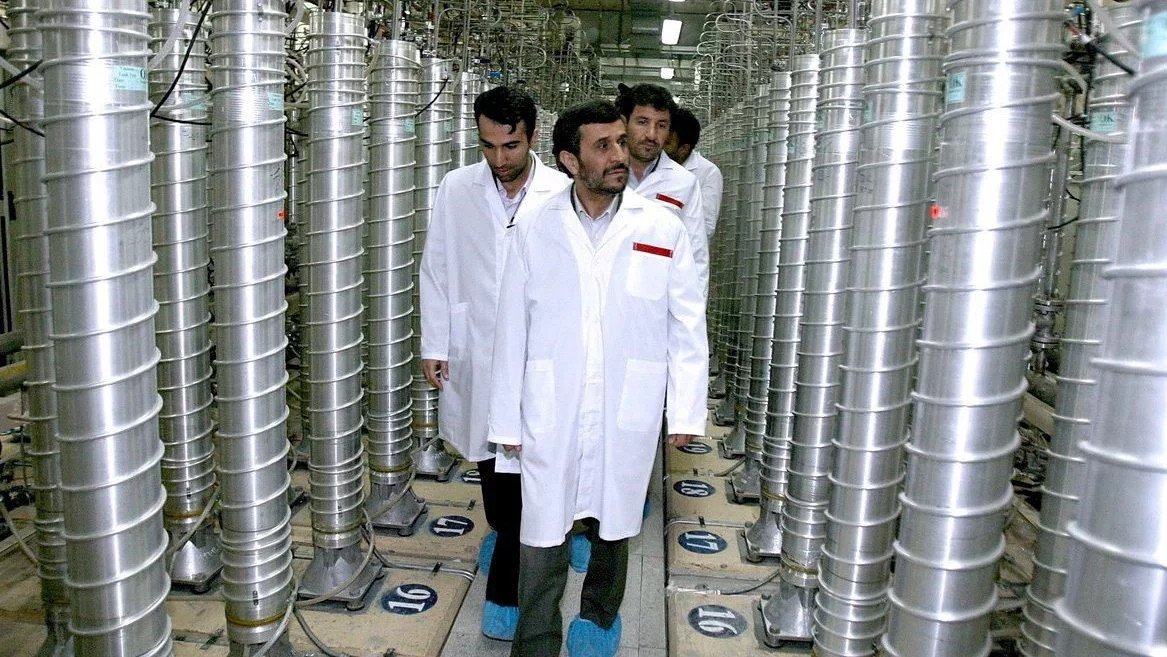🚨🚨SCOOPLET!🚨🚨 China is expanding its mysterious, giant airfield in the middle of the desert. New (28 June) imagery from @Maxar shows a dozen or so buildings under construction at the site.
This may be China's Area 51 under construction.
Full Story: npr.org/2021/07/01/101…
This may be China's Area 51 under construction.
Full Story: npr.org/2021/07/01/101…

This airstrip is huge at 5km (3 mi). It's weird in several ways:
✅Its in the middle of nowhere, on the edge of an abandoned nuclear test site at Lop Nur.
✅It doesn't have normal aistrip stuff, like taxiways, aprons or control towers.
✅Did I mention it's GINORMOUSLY LONG?
✅Its in the middle of nowhere, on the edge of an abandoned nuclear test site at Lop Nur.
✅It doesn't have normal aistrip stuff, like taxiways, aprons or control towers.
✅Did I mention it's GINORMOUSLY LONG?

Last year its believed that China landed a classified "space plane" at the site. That's in part because the runway JUST HAPPENED to align perfectly with the space plane's orbital path.
https://twitter.com/planet4589/status/1302486141090885632?s=20
Imagery from @planet even captured what MIGHT have been the space plane on the runway. Or, you know, maybe just a fuzzy dot...
npr.org/2020/09/09/911…
npr.org/2020/09/09/911…

But other than that, the airstrip has been quiet. There's not a lot going on. Also not much in the way of accommodation. These modular buildings at the south end of the runway are only place to stay for at least 40km in any direction.... 

Until now! Between August 2020 and now, a whole bunch of new structures have popped up near the central hanger in the middle of the site (Left image: Feb 2020, Right image June 28 2021).
It's not entirely clear what these structures are for, but they're fairly big.
It's not entirely clear what these structures are for, but they're fairly big.

It's puzzling, says @planet4589 because if this facility really is just used for retrieving the space plane every now and again, you wouldn't need these kind of permanent structures:
"This seems to be something that is more than just, 'We're coming here for the weekend.'"
"This seems to be something that is more than just, 'We're coming here for the weekend.'"
Also, this site, in a desert 100s of miles from any decent sized city, isn't really somewhere you'd want to hang out. Though I would note it's probably a DRY heat. 

So what's going on? Well, says @nktpnd, a giant runway in the middle of the desert can be used for other things... testing secret aircraft and drones, for example.
"This does look like it could be a Chinese Area 51," he says.
"This does look like it could be a Chinese Area 51," he says.
Ok, but seriously. There's a lot we still don't know about the site, and a lot we may never know. But this does seem significant.
"I think we're observing a pretty important facility for China's military space activities, that appears to be growing," Panda says.
"I think we're observing a pretty important facility for China's military space activities, that appears to be growing," Panda says.
For a little more background on what makes the Lop Nur airfield so unusual, check out this thread from the space plane landing in 2020:
https://twitter.com/gbrumfiel/status/1303770864232599552?s=20
And as a final coda for the OSINT geeks, I'd just note that the beginnings of this construction was actually visible when the space plane landed in September of 2020! It just wasn't obvious yet what was happening at the site. 

• • •
Missing some Tweet in this thread? You can try to
force a refresh














